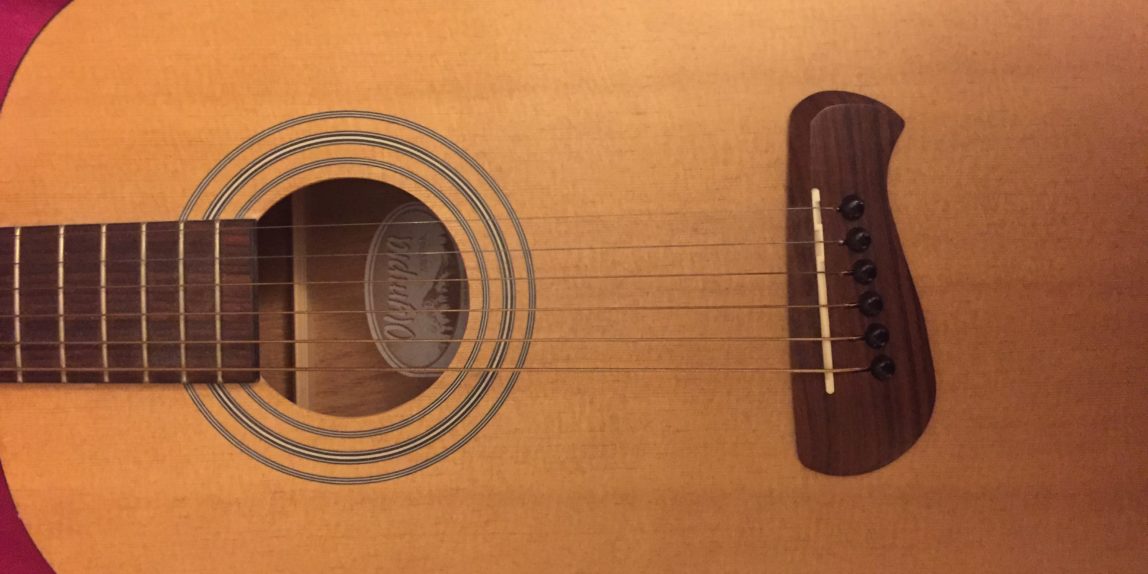Are you a musician who has a hard time explaining music theory to non-musicians?
Are you a music student who wants to improve your music theory skills?
Are you a non-musician who wants to know what your musician friend are talking about?
Keep reading.
Whether or not you study music or not, the words “music theory” might make you cringe. Getting into the technical aspects of any study can be complicated and tedious. If you were a music major you may be having flashbacks to boring lectures and menial busy work.
Many music theorists like to talk about the building blocks of music in a very complex and convoluted way. The purpose of this post is to talk about music theory basics in simpler terms so that anyone can understand.
The first thing you should know: There are 12 different notes.
In the United States, our names for these notes are based on the letters A, B, C, D, E, F, and G.
So those are seven notes. We need five more!
This is where sharps and flats and come to play. Sharps (#) modify a note to make it higher. Flats (♭) modify a note to make it higher.
So here are our twelve notes:
A, A#, B, C, C#, D, D#, E, F, F#, G, G#…and then we start over back at A!
Notice that there are no sharps between the notes B and C, and between the notes E and F. Make sure to remember those exceptions.
Here is a different way to write the 12 notes with flats instead of sharps:
A, B♭, B, C, D♭, D, E ♭, E, F, G♭, G, A♭…and then we are back at A again.
Notice the differences between the two sequences. They are the same notes but written differently. For example, A# and B ♭are the same note. This is the same for C# and D♭, D# and E♭, F# and G♭, and G# and A♭. They are just different ways of writing the same tone.
We can choose any note to start on in our alphabet. Wherever we start becomes the key center. If we are in the key of G, than we start with G: G, G#, A, A#, B, C, C#, D, D#, E, F, F#, and then we are back at G. If we are in the key of C we can think of the sequence as follows: C, C#, D, D#, E, F, F#, G, G#, A, A#, B and then we start over at C. Think of the key center as a root or anchor. When you start on one note, go on a journey, and then resolve on the note you started on, it creates context and balance.
The 12 musical notes can be thought of in different ways. In my opinion, the most important musical concept that any beginner should learn as quickly as possible are INTERVALS.
Intervals are how we relate the other eleven notes to our key center.
Let’s stay in the key of C:
C, C#, D, D#, E, F, F#, G, G#, A, A#, B…C
0, 1, 2, 3, 4, 5, 6, 7, 8, 9, 10, 11…12
P1, m2, M2, m3, M3, P4, TT, P5, m6, M6, m7, M7…P8
These are three different ways of conceptualizing the same sequence.
Now what do these new symbols mean? These are interval names!
‘P’ stands for perfect, ‘M’ stands for Major, and ‘m’ stands for minor.
We start with P1 (Perfect unison). This is our key center (which right now is C)!
We end with P8 (Perfect octave). This is the same note as P1 but one register higher (so again, we are back at C). One octave contains all 12 notes. All of the sequences I have listed span one octave.
The other eleven notes fall between P1 and P8.
When we divide the twelve notes in half we get 6. The number 6 in our sequence correlates with F# (in the key of C) and with the symbol TT. This is called the Tritone. It is known as the most abrasive of intervals. In the middle ages, as well as the Baroque and Classical periods, the tritone was never played because it was known as “the devil’s chord,” which really paints a picture of conflict and dissonance.
The most consonant intervals are the perfect ones! Besides P1 and P8, we have the Perfect Fourth (P4, 5 half steps above the key, and an F in the key of C). We also have the Perfect Fifth (P5, 7 half steps above the key, and a G in the key of C
Each time we advance forward in the sequence we are moving up a half step, one half step is also called a minor second (m2). Two half steps together create a whole step, which is also called a major second (M2). Major and minor intervals are crucial to understand. All I will say now is that Major intervals are generally associated with happier feelings and tones. Minor intervals are generally heard to be more subdued and melancholy.
Two notes sounded together are called a “diad.”
This is where we will end our lesson today.
If you want to consciously learn music, then you have to understand the building blocks of tonality. Mastering the basics will help you learn to speak and read music as a language and allow you to create whatever sounds you want. Learning the intervals (diads) is the first step. This is the most concise way that I can describe the fundamentals of (Western) harmony in words. Did I do good job? Any comments or questions? Please let me know in the comments.
Check out this short video where I run through the twelve notes and the thirteen intervals so your ears can contextualize what you just read!
